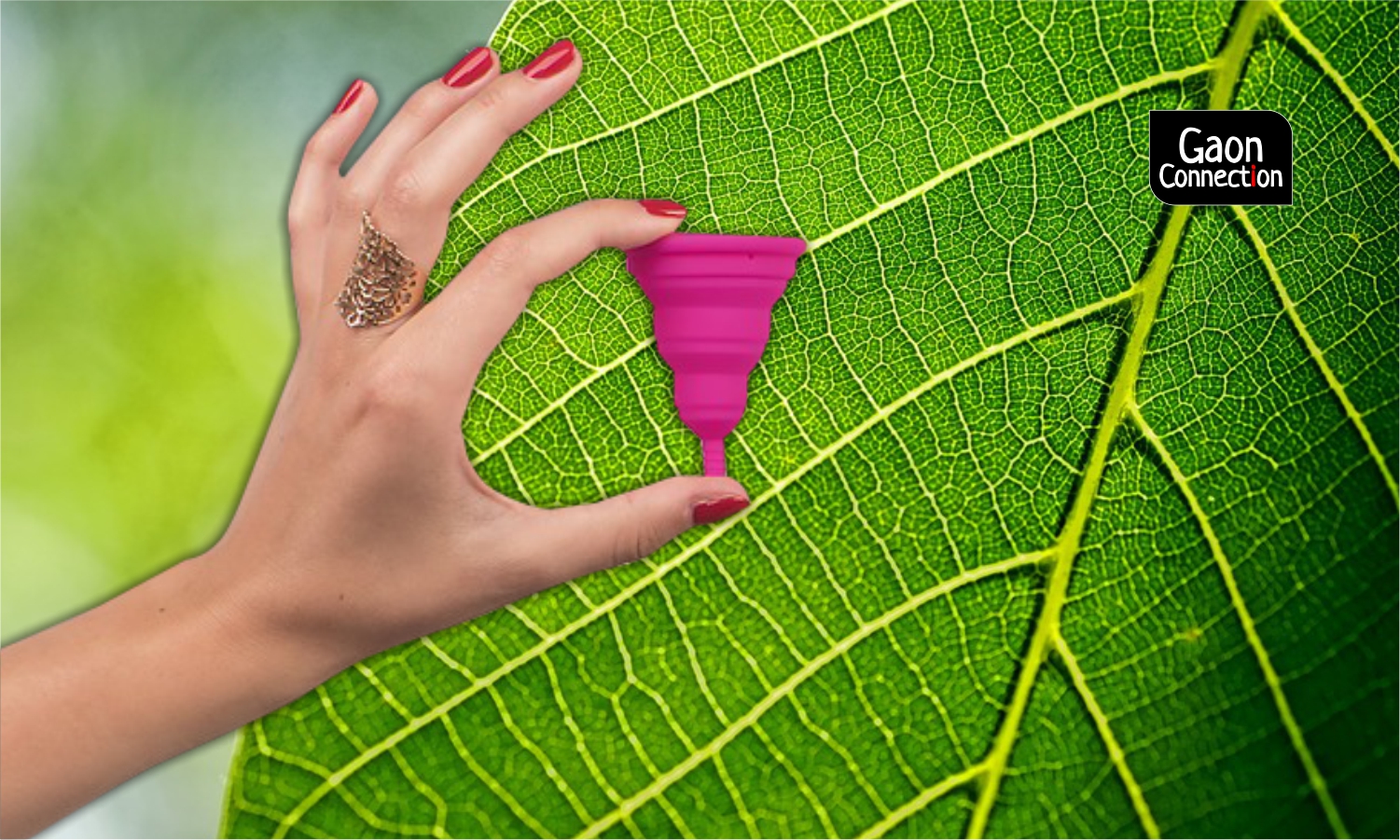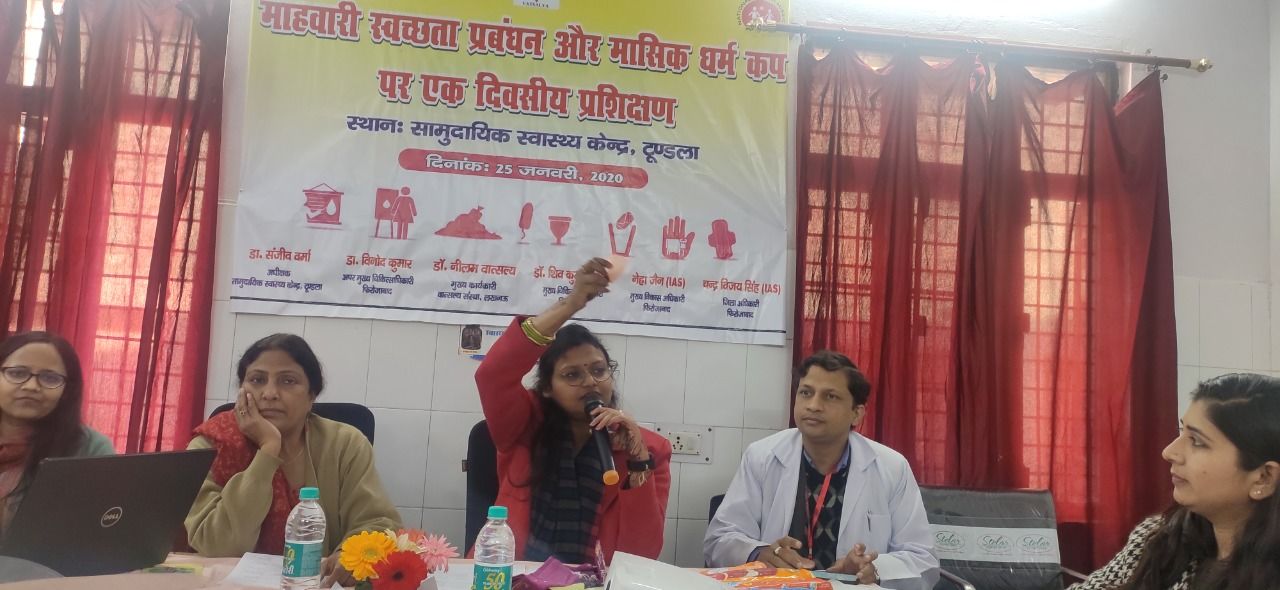Promoting the use of menstrual cups will be a huge step towards protecting the environment
Sanitary pads are 90% plastic. Their decomposition takes 500-800 years. On the other hand, a woman can use one menstrual cup for 10 years. They are made of silicon, and hence are safe for disposal


A sanitary pad is made of 90 per cent plastic, which is equivalent to using four plastic bags. It would take 500-800 years for it to decompose.
To promote menstrual hygiene, the government has made an effort in the past few years so that more and more girls and women use sanitary pads, but there have been no guidelines for their disposal. Many girls and women, especially those living in rural areas, don’t know where to dispose of these sanitary pads.
Lakshmi Devi, 24, a resident of Silli block in Ranchi district of Jharkhand, said: “I used to wrap the used pads in a paper or in a plastic bag and throw them in the forest. Often, the dogs would carry them back to the village. Now, I dig up a small pit and dump the pads there.”
This method of disposal is detrimental to the environment, but it’s not Laxmi’s fault. For the past few years, there have been many advertisements on television that promote the use of sanitary pads, but there hasn’t been any information provided about disposing them of. Because of this, lakhs of women like Lakshmi are adopting the same method of pad disposal, which remains a matter of grave concern.
Like Lakshmi, 57 per cent of women and adolescent girls in the country are using sanitary pads, but they don’t know how to dispose them of safely. As a result, sanitary pads can be seen littering garbage piles, ponds, fields, behind school buildings and even on the roads, posing a threat to both, the environment, and health. If women and adolescent girls use sustainable menstrual products like menstrual cups during menstruation, it will be an important step for the environment, as one menstrual cup can last a woman for 10 years. It is made of silicon, so its disposal is not harmful to the environment.
According to EcoFemme: Unlearning Menstruation: Sanitary Waste in India, a sanitary pad has more than 90 per cent plastic, which is equivalent to four plastic bags. It takes 500-800 years to disintegrate. These plastic traces reach inside human bodies through food and water. The UK has just recently done a research according to which 1,000 plastic microscopic particles reach inside our body in a single meal. More than 80 per cent of plastic fibre particles have been found in samples collected across five continents.
According to the National Family Health Survey (2015-16) report, 48.5 per cent of women in rural areas use sanitary pads while 77.5 per cent of women in cities use them. Currently, 57.6 per cent of women use sanitary pads. One can well imagine the quantity of plastic waste generated by such a large size of the population. According to a news report, about 12 billion sanitary pads are being buried inside the ground in the country every year. About 125 kg of menstrual waste is generated by each woman during her entire menstrual cycle and this waste is buried inside earth every month causing serious damage to the environment.
Experts believe that the manner in which the sanitary pads are currently being disposed poses a serious threat to the environment. If the menstrual cup is brought into general discourse, it will be an important step towards environmental protection.
Preeti Singh, an auxiliary nurse midwife, from Veerpura village in Firozabad district of Uttar Pradesh has been using a menstrual cup since January. She said: “Previously when I had been using a sanitary pad, there was a hassle of changing it through the day.”
She added: “Many times, I could not go to work during periods because of the hassle to find a place to change the pads again and again during the day. It was always worrying. There is no such bother with the menstrual cup. I put it in the morning and need not think about emptying it during my work hours. Also, I need not constantly worry about its disposal. I have been using the cup for four-five months and haven’t faced any problems.”
Preeti is not the first woman in Firozabad to use the menstrual cup. Like her, 50 other women have started using the cups with positive results. Neha Jain, the chief development officer of Firozabad, had, in January, launched a pilot project concerning the use of menstrual cups in the district with 50 women, including ASHAs, ASHA Sanginia and the ANMs. She has also launched an initiative of gifting menstrual cups.

“When I was on duty during the elections, I had suffered the mental stress of having to change pads several times a day. When I used the menstrual cup for the first time, I found it quite comfortable actually. From then on, I decided to promote the use of menstrual cups. With support from the Vatsalya institution, we met 50 ASHAs and ANMs and provided them menstrual cups. They were first told to use these cups first and then to promote them among women in villages only after they were fully satisfied,” said Jain.
She added: “A menstrual cup is made of silicon, which is safe for the body. It can be used for up to 12 hours. Once you buy it, you need not buy anything else for up to 10 years. The price of a cup is Rs 500-700, which is only a one-time expenditure. Ten years later, when you dispose of it, the silicon will not harm the environment in any way.”
“If we have to gift something to someone, why not gift a cup which costs Rs 400-500. I have gifted a menstrual cup to my domestic help. She is using it and is also quite happy. My mission has slowed down a little bit because of the lockdown,” said Chief Development Officer Neha Jain.
The number of people using the menstrual cup is nevertheless quite limited. There are many misconceptions about its use. A menstrual cup comes for Rs 400-700 and lasts for as long as 10 years so this way, it’s a cheaper option compared to sanitary pads. People just need to follow instructions and get used to it. It is as easy to use as a sanitary pad.
Gynaecologist Dr Neelam Singh, said: “The use of sanitary pads is also harmful to women besides the environment. Harmful chemicals like dioxins present in the sanitary pad can be carcinogenic. Its disposal too has always been challenging. Now, efforts should be made to bring a menstrual cup into general discussion, to include it in the public domain so that more and more people can use it.”
According to her, 28 per cent of the people use sanitary napkins and dump them into ponds. Tons of sanitary pads waste gets piled on. In cities, people dump them in the dustbin which is detrimental to the health of the sanitation workers handling the garbage. Maintaining dustbins is not in the habit of the people in the village and people dump garbage wherever they feel like, which is fatal in every way.
“The use of menstrual cups will not allow any plastic waste. It also doesn’t create skin rashes. This is a cost-effective and a long-lasting product. Now, those who are using it tell about all sorts of benefits from it. There is a misconception in the society about its use that it may harm the uterus as it is inserted in the vagina. Such fears are baseless,” Dr Neelam said.
She added: “It needs to be promoted on a large scale. The government should facilitate an in-depth study and research and raise evidence to assure the people that its use is not harmful in any way.”

